The Venezuelan Suntiger (Psalmopoeus irminia) is an arboreal New World tarantula species found mainly in Venezuela. The bright orange stripes on this spider make it an appealing pet for tarantula owners.
If you’re considering getting one of these beautiful spiders, you’ve come to the right place. We’ll tell you everything you need to know to properly care for this magnificent spider.
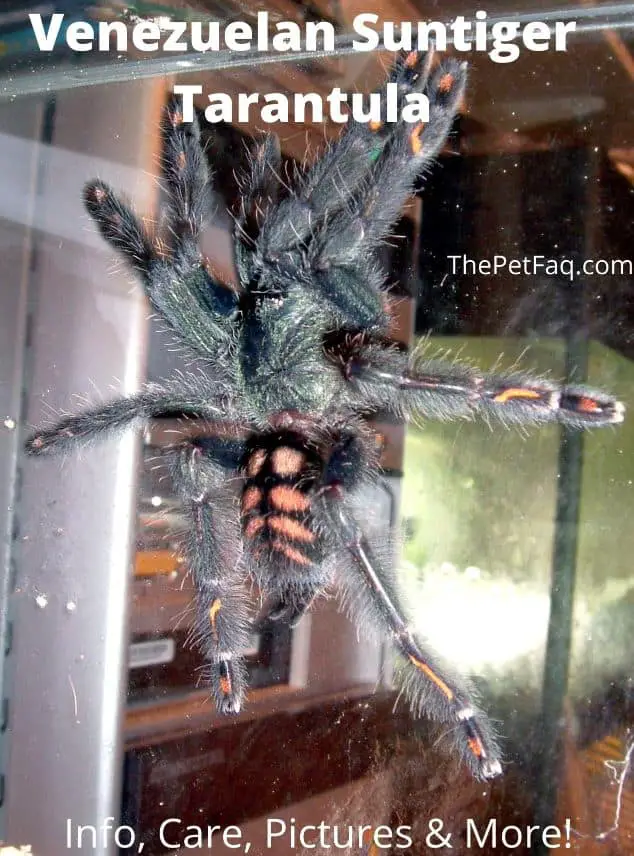
Venezuelan Suntiger Tarantula Care Sheet
| Species Name | Psalmopoeus irminia |
| Family Name | Theraphosidae |
| Common Name | Venezuelan Suntiger, VST |
| Category | New World |
| Type | Arboreal |
| Native Location | Venezuela, Guyana |
| Body Length | 2.25 inches (6 cm) |
| Leg Span | 5.5” to 6″ (14-15.5cm) |
| Growth Speed | Fast |
| Urticating Hairs | No |
| Social | Solitary |
| Diet | Crickets, roaches, mealworms |
| Temperature | 80 to 85 degrees Fahrenheit |
| Humidity | 65 to 75% |
| Life Expectancy | Females: 12 years / Males: 4 years |
| Recommended Experience Level | Intermediate |
| Minimum tank size | 5 to 10 gallons |
Venezuelan Suntiger Overview
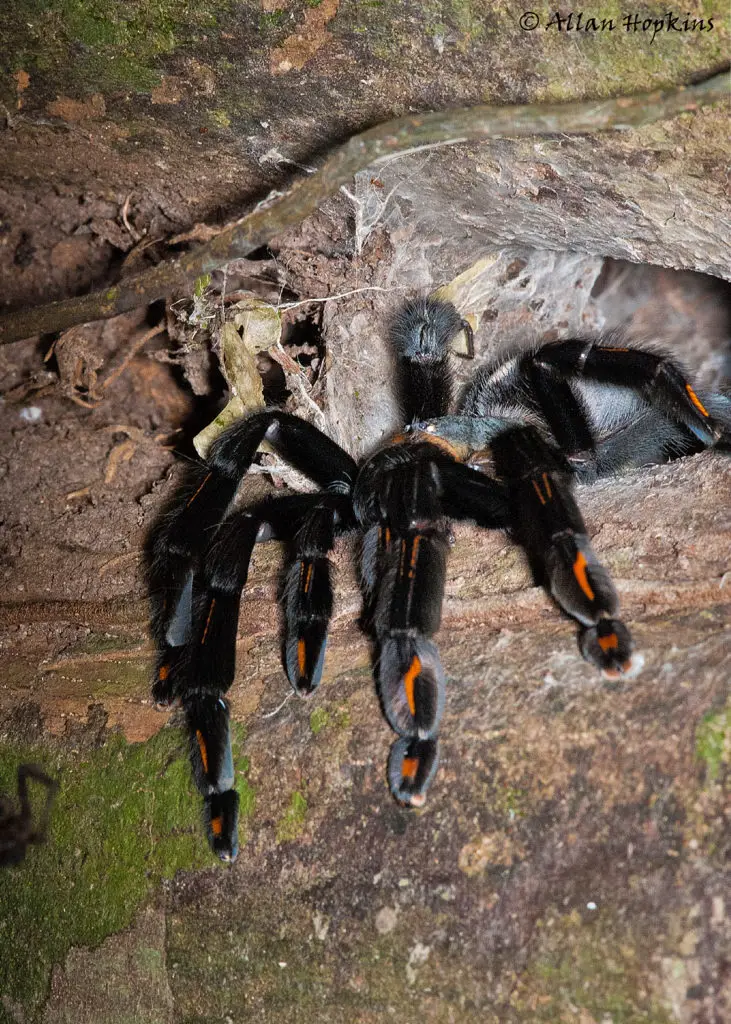
The Psalmopoeus irminia, also known as the Venezuelan Suntiger Tarantula, is a very defensive spider with potent venom. It’s an arboreal spider found primarily in Venezuela, but it can also be found in Guyana and Brazil. It typically resides in medium-high tree cavities.
Defensive and fast, these spiders are also smaller than some other tarantulas, which limits the size of the kind of prey they can feed on. They usually feed on insects but are also capable of eating small mammals in a pinch.
Appearance & Varieties
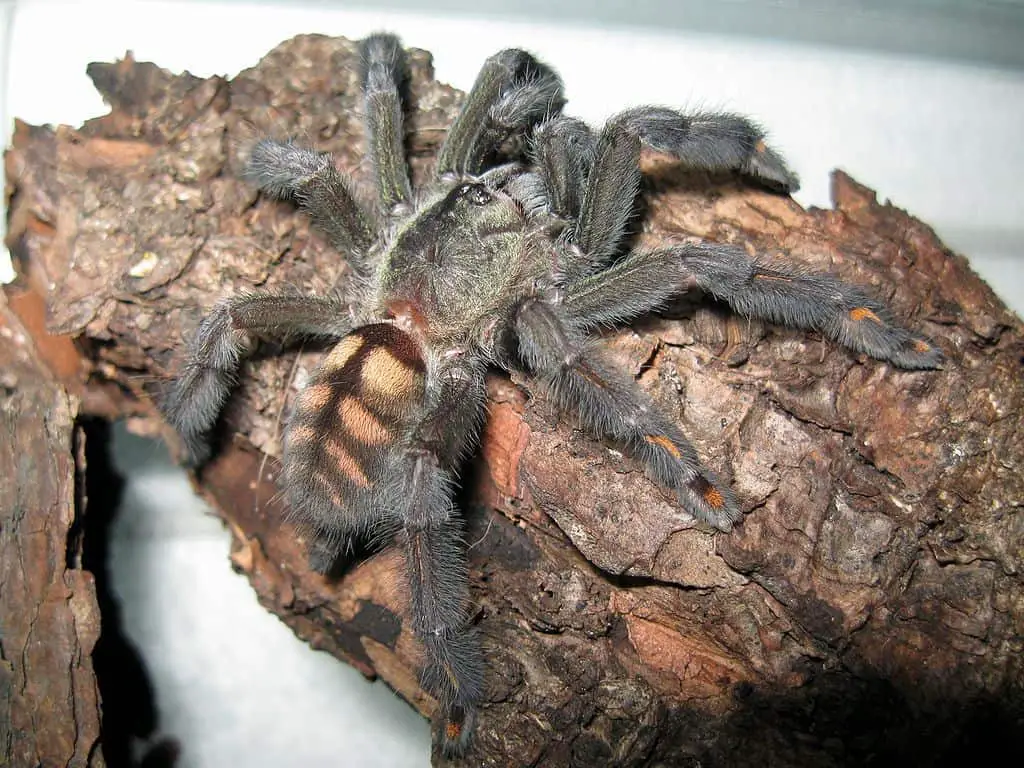
Venezuelan Suntigers are sexually dimorphic, which makes the appearance of males and females different.
Both males and females have beautiful orange tiger stripes on top of the abdomen and bright orange chevrons over the legs. The males are 4 to 5 inches long and have a grey-brown color when fully grown. Females are slightly bigger than males at 5 to 6 inches and are black, which better contrasts with the orange stripes and gives them a more desirable appearance.
In addition, males also have thinner legs than females.
Venezuelan Suntiger Tarantula Price
If you’re looking to buy a Venezuelan Suntiger you’ll find many online breeders that have them for sale. Typically they cost between $40 and $80 depending on the age and whether you buy a male or a female.
Males are typically cheaper than females because females have more beautiful coloration, live longer, and grow larger.
Behavior and temperament
The Venezuelan Suntiger is a bit of an outlier when it comes to New World species. They kind of flip the paradigm of New World species on its head. Whereas most New World tarantulas are relatively docile with weak venom and urticating hairs the Venezuelan Suntiger has relatively strong venom, is defensive, and has no urticating hairs.
The Venezuelan Suntiger Tarantula’s defensive behavior, plus its strong venom, is what makes her a bad choice for beginners.
She may not be able to kick urticating hairs at you, but she’s still a very fast mover and jumper, and she’s also as prone to run as she is to bite. If given enough place to hide, she’ll often skip out of sight if given a notice instead of biting, so gently tapping the tank before entering is advisable.
Due to this spider’s defensive nature and potent venom, it’s not recommended to handle them unless absolutely necessary.
Caring for a Venezuelan Suntiger Tarantula
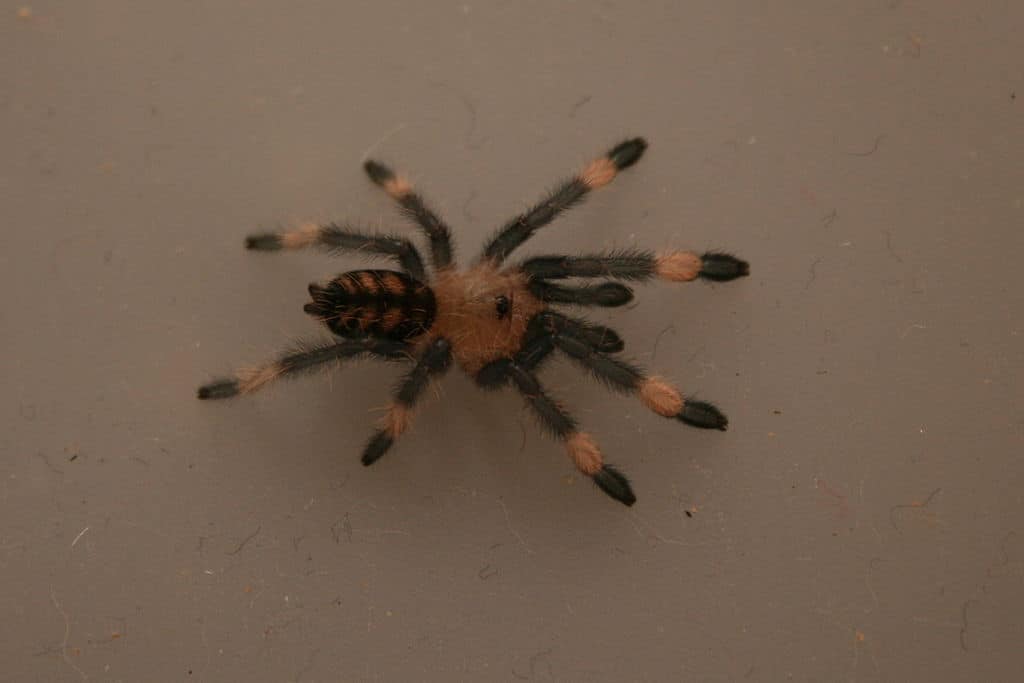
Tank size
The tank should be large enough, and much taller than it is wide, to make the Venezuelan Suntiger Tarantula comfortable. Ideally, adults should have a tank that’s at least 12 inches tall and 8 inches long and deep, but 18 inches from top to bottom would be better.
Temperature & Humidity
The natural habitat of the Venezuelan Suntiger is warm and humid, with temperatures that range from 59°F to 90°F, so it’s advisable to keep the room temperature between 80°F to 85°F, with humidity at 65% – 75%.
Decoration & foliage
A twig or small cork bark should be enough for a juvenile Venezuelan Suntiger Tarantula.
Adults should have a large piece of bark, such as curved cork bark, vertically in the tank for them to lie on. More elements such as artificial plants and sphagnum moss are good to create more hide places for the spider.
Water bowls should be placed far away from the spider’s hide because they produce plenty of webs, which can make it difficult to retrieve the dish. You can leave it lying on the floor, but supergluing it to a wall, not too high or close to a hide, is ideal. It’s advisable to secure the cork with aquarium-safe silicon sealant to keep it from topping over with the spider’s activity.
Substrate
Venezuelan Suntigers are arboreal spiders, but they behave semi-arboreal when in captivity. This means that they can burrow, especially when they’re spiderlings, but it’s not common behavior if they have somewhere else to hide.
Three inches of substrate should be enough for this tarantula. The particular composition isn’t as important as it is to make sure the substrate isn’t too moist for them. Good materials to use include coconut fibers and peat moss.
Feeding & Diet
Avoid feeding prey items to your Venezuelan Suntiger that are larger than its abdomen. Crickets and roaches will do good in the correct quantities and frequency. What they should eat also depends on what stage of development they’re in.
Spiderlings can have either a flightless fruit fly, a small roach, or a small cricket (under ¼ inch each) twice a week; once spiderlings start molting, wait four to five days before feeding them again.
The juveniles, over 2.5 inches, should eat two or three medium crickets every five to seven days, depending on their size. You should feed adults every seven to ten days with around six to ten large crickets or four to seven large roaches.
Adults can also be fed with small house geckos to vary their diets, though this is definitely not necessary and they can thrive on a diet that consists purely of insects.
You should wait ten to fourteen days after a molt before you feed them so that their fangs become strong enough to eat once again.
Communal living
The Venezuelan Suntiger should not be kept communally. They’re territorial spiders that will kill and eat intruders. Make sure that you never house more than one of these spiders in a single enclosure.
Health & Lifespan
Venezuelan Suntigers are hardy and healthy tarantulas that do not suffer from any particular genetic defects or diseases.
Of course, they have their predators in the wild, but in captivity, they often live their full lifespan as long as they’re well taken care of.
A female Venezuelan Suntiger can live for 12 years while males have much shorter lifespans at only 4 years.
To keep your Suntiger in good shape it’s essential that you provide them with high-quality prey insects that are captive-bred. Insects that come from the wild can have parasites that can spread to your spider, reducing its lifespan.
You should also make sure that you keep an eye on their enclosure. Mold and bacterial growth have to be prevented. To do so, it’s important that there’s enough ventilation and that you remove molts and uneaten food in time.
Venezuelan Suntiger Breeding
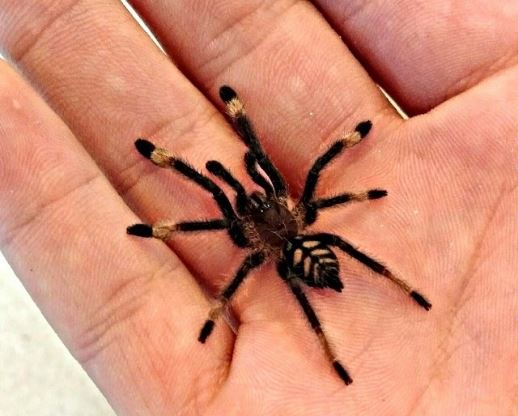
Breeding should only be attempted when both spiders are well-fed, under their ideal temperature and humidity, and at least one month after the last time the female was molted. They shouldn’t be left unsupervised as the female may attempt (and succeed) at eating the male. If you perceive aggressive behavior, it’s enough to separate them and allow them to try another time.
These spiders are able to double-clutch, which means that the females are capable of placing two different egg sacks even if they just mated one time. The spider will lay the first sack two to four months after mating, and after that, the eggs will last around one month to hatch. The second sack will be produced another two to four months after the first one, and it’ll be as viable as the first, with 50 to 250 eggs each.
You should carefully take out the sack, pour it over a sterile recipient, and cover it with a protective sheet with tiny holes for ventilation. Separate any eggs that may have gone bad, as well as the spiderlings that hatch, and care for them as described in the previous segment.
I do want to remind you that breeding is not something that you should randomly attempt. Due to the fact that these tarantulas can lay hundreds of eggs, you can end up with hundreds of venomous spiders that grow to quite a large size. It can be very difficult to find suitable homes for all of them. It’s best to leave the breeding to experts.
Venezuelan Suntiger Facts
- The Psalmopoeus irminia was first described in 1994 by Saager
- Males of the Psalmopoeus irminia look very similar to the Psalmopoeus cambridgei
- All members of Psalmopoeus lack urticating hairs, something that’s relatively rare in New World tarantulas
Final words: Is the Venezuelan Suntiger the right Tarantula for you?
Strong venom, fast speed, and a defensive nature make the Venezuelan Suntiger unsuitable for beginners.
These spiders are not afraid to bite and since their bites are quite potent a novice tarantula handler can end up in a lot of trouble if choose this species. Beginners are better off choosing an easier species such as the Antilles Pink Toe or the Mexican Red Rump.
For more experienced handlers the beautiful, unique appearance of this spider can definitely be worth the challenge!
- How Long Do American Eskimo Dogs Live? Important Factors and Care Tips - September 29, 2023
- Do American Bulldogs Need Grooming? Essential Tips and Care Guidelines - September 29, 2023
- Do Bengal Cats Enjoy Playing? Essential Tips for Keeping Them Active - September 29, 2023